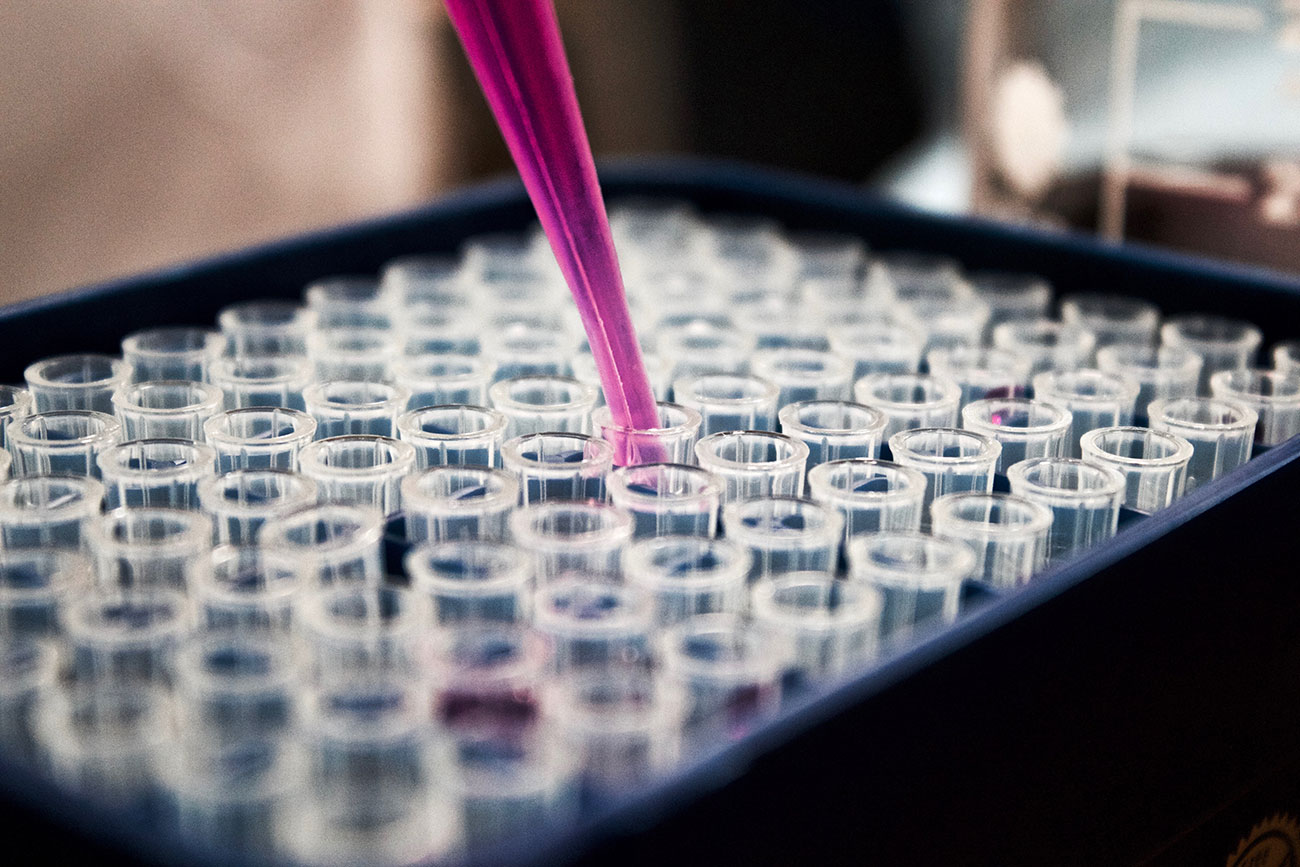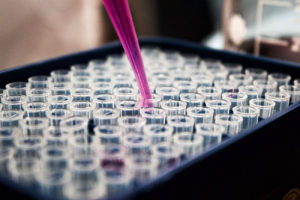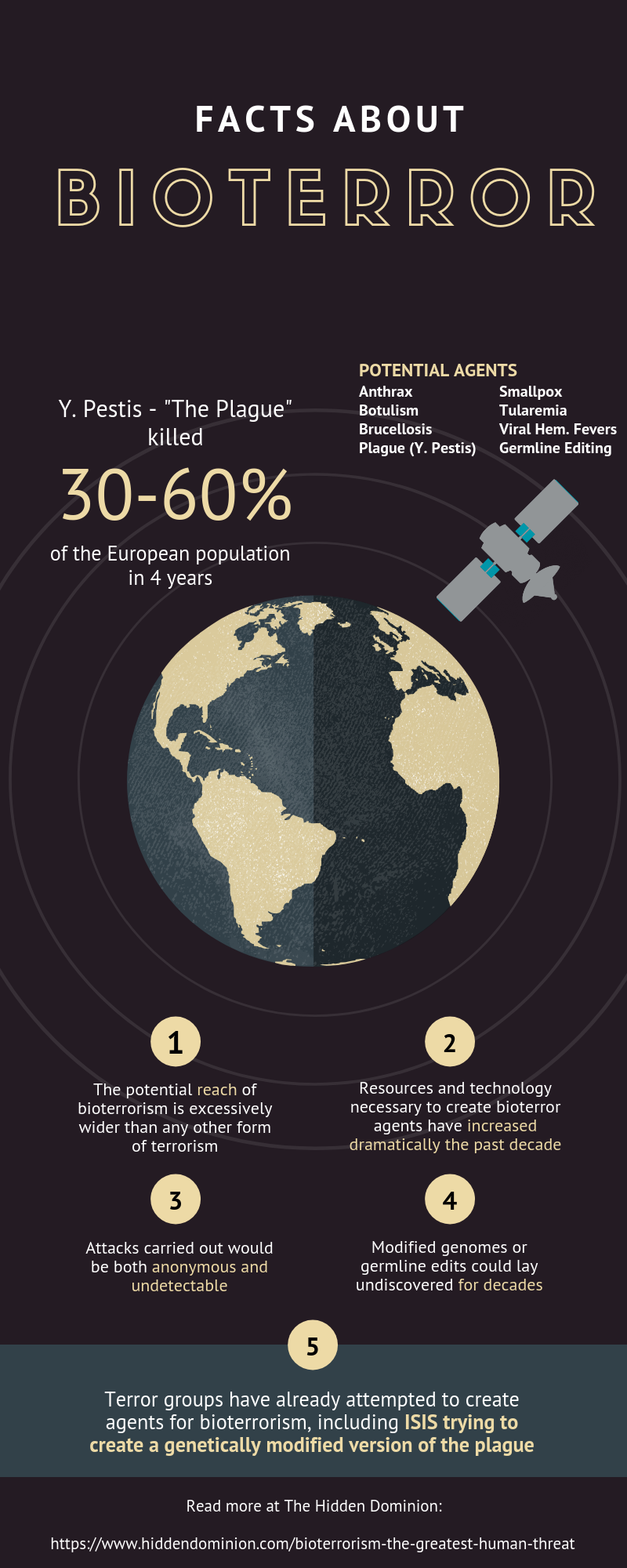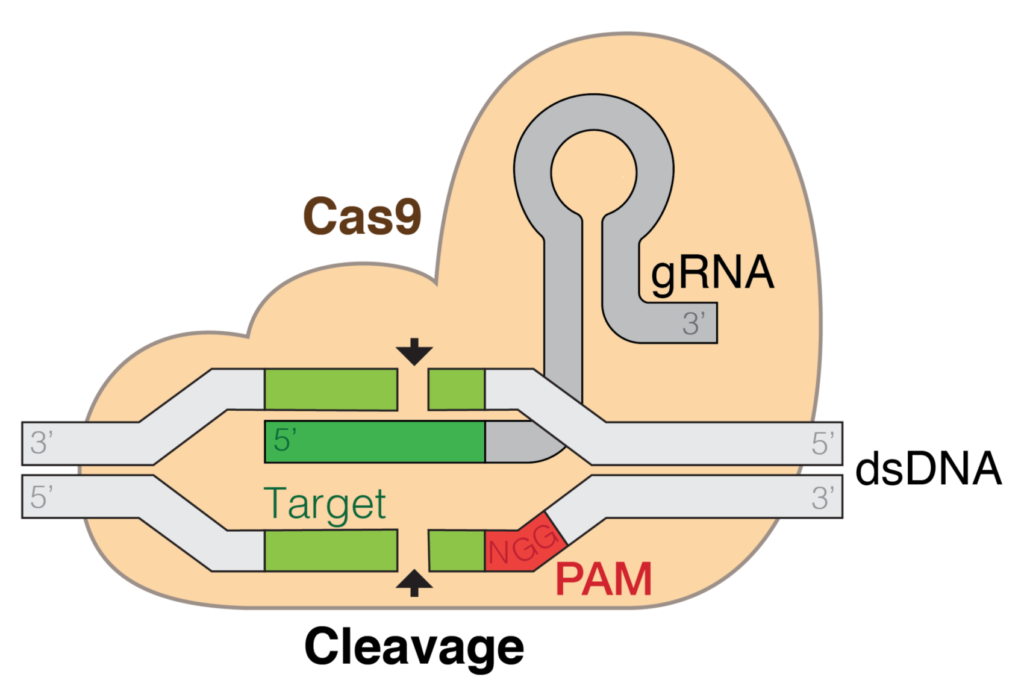Most Recent News


Popular News



Information on the threat of bioterrorism—The intentional release of biological weapons of mass destruction and their potential impacts.
 Bioterrorism is already a demonstrable threat, appearing in many situations from Anthrax to plague (Yersinia pestis) modification.
Bioterrorism is already a demonstrable threat, appearing in many situations from Anthrax to plague (Yersinia pestis) modification.
I’m here to argue that it is easily the greatest human threat, in terms of the number of individuals potentially affected and totality of damage caused.
Consider some common agents (courtesy of CDC):
All of these agents cause massive levels of morbidity rates, most of them even with treatment.
In the 14th Century, the Black Death (Y. Pestis) killed up to half the European population. 800 years earlier, the plague had caused similar devastation in the Byzantine empire.
In comparison, 32,658 people died of terrorist attacks in 2014. The single bacteria of Y. Pestis killed half of just the European population in its peak from 1347 to 1351, whereas physical terrorist attacks killed .0000045% of the worldwide population in one year.
Physical terrorist attacks, while horrible and definitely something worth putting resources into reducing, clearly do not hold the same potential for devastation that bioterrorism does.
Chemical attacks are relatively the same. While they can (and do) tend to cause more damage than isolated terrorist incidents, they are localized. The chemicals cannot (or at least, do not tend too) spread biologically en masse to others, as in the case of biological terrorism.
Typically, climate change is also consider a “great threat”. While it is a threat, it is hardly as problematic as the systematic medical catastrophe that would result in an effective and efficient biological attack.
And with the modernization of travel (IE: global), a single virus or bacteria could have the capabilities of reaching every corner of the planet very quickly.
Even ISIS has tried to weaponise the bubonic plague.
 Certainly, we have antibiotics which can be used to treat most kinds of the plague (aside from pneumonic). However, antibiotic resistance is becoming a real threat in itself.
Certainly, we have antibiotics which can be used to treat most kinds of the plague (aside from pneumonic). However, antibiotic resistance is becoming a real threat in itself.
Five scientists who worked with plague strains that were thought to be “harmless” have also died in previous years.
As we come to learn more and more about our genome, whether through science or technological advancement, comes the enhanced risks associated with that knowledge.
Y. Pestis is arguably one of the most likely bio-terrorist agents because of its lethal capabilities. If it were developed into an antibiotic resistant form that can lay dormant for a credible amount of time, all hell will break loose when it begins to manifest.
Creating a cure takes years, decades even. And an agent like the plague strikes way too fast for any scientist to hope to slow down in time to prevent deaths en masse. Minimization of losses, sure. But preventing a pandemic? Unlikely.
From the CDC:
Yersinia pestis used in an aerosol attack could cause cases of the pneumonic form of plague.
One to six days after becoming infected with the bacteria, people would develop pneumonic plague. Once people have the disease, the bacteria can spread to others who have close contact with them.
Because of the delay between being exposed to the bacteria and becoming sick, people could travel over a large area before becoming contagious and possibly infecting others.
Controlling the disease would then be more difficult.
A bioweapon carrying Y. pestis is possible because the bacterium occurs in nature and could be isolated and grown in quantity in a laboratory. Even so, manufacturing an effective weapon using Y. pestis would require advanced knowledge and technology.
However, that “advanced knowledge” is becoming easily understood from the modernization of knowledge through the internet. People with no medical/scientific backgrounds are able to purchase products to experiment with the human genome easily (see “CRISPR” below). Likewise, technology is expanding rapidly with no real type of regulation allowing different forms of genetic editing/engineering technology to be put into use sooner, rather than later.
Tom Inglesby gave an interesting speech to the US House of Reps in 2014, citing similar concerns over bioterrorism and the lack of adequate resources available to combat it:
There are a number of major biological threats that confront the nation. Among these are the rising levels of antimicrobial resistance in American hospitals leading to increasing numbers of untreatable infections; the prospect of new pandemics of influenza or other novel emerging infections like SARS or MERS; the possibility of a laboratory accident in which engineered contagious pathogens cause epidemic disease; and, of course, the issue prompting today’s hearing, the potential for the use of biological weapons in acts of terrorism.
There are many commonalities between bioterrorism and these other biological threats, and there are also aspects of the bioterrorism threat that require specific, major planning and action.
My three main messages for the committee are the following:
- The capability to create and use biological weapons exists widely in the world.
- The consequences of the use of such weapons could be substantial loss of life and societal disruption.
- While substantial progress has been made in past years, there is a great deal that needs to be done to prepare to respond to bioterrorism.
We also need to understand that the scope of future bioweapons events could be far, far greater that what we saw in 2001 [Anthrax letter distribution].
In 2009, the US National Security Council said: “The effective dissemination of a lethal biological agent within an unprotected population could place at risk the lives of hundreds of thousands of people. The unmitigated consequences of such an event could overwhelm our public health capabilities, potentially causing an untold number of deaths. The economic cost could exceed $1 trillion for each such incident.”
The use of such weapons could lead to substantial loss of life and great societal disruption. Even with a small or modest-sized attack, the social and economic impact would be significant.
The most notable piece of that is the bold section: “The capability to create and use biological weapons exists widely in the world”.
It does, because virus/bacteria are present everywhere. Deadly strains such as Y. Pestis mentioned above are still infecting humans in the thousands worldwide, every year.
Getting ahold of these agents, or augmenting less-serious ones, are becoming easier year-by-year. While our capabilities and resources to respond to them are stagnant.
Simple: utilizing weapons such as these holds easy returns for those wishing to cause harm:

No one has gotten smallpox naturally since 1977.
A worldwide massive smallpox vaccination program eliminated smallpox worldwide.
However, there are still 2 labs with access to the variola virus (smallpox). The Centers for Disease Control and Prevention (CDC) in the United States and the Russian State Centre for Research on Virology and Biotechnology in the Russian Federation.
An outbreak from one of these labs would cause significant damage worldwide and would likely be uncontainable once released.
If the virus that causes smallpox were used in a bioterrorist attack, people who come into contact with the virus would be at risk of getting sick.
By 1972, the smallpox vaccine was no longer given routinely in the United States. As a result, most people born in the United States after 1972 have not been vaccinated against the disease.
Some people have been vaccinated through the military or because they were part of Smallpox Response Teams that were formed after the 9/11 terrorist attacks. These vaccination efforts are part of the larger plan to prepare for a bioterrorist attack.
However, the vaccine does not give lifelong immunity, and people who have been vaccinated against smallpox before may still need to be revaccinated in a smallpox emergency.
Again, an augmented or mutated form of this virus that would then be vaccine-resistant would inflict damage to the planet as heavily as it did pre-modern medicine.
A vaccine can take years to develop effectively, causing variola to spread worldwide in a small amount of time from the globalization of transport, if not immediately contained.
This documentary is a bit outdated, but it’s still an excellent beginner’s guide for someone who prefers watching instead of reading.
Give it a solid watch, but make sure to remember that it is older (1999), so some things are not exactly on point.

(As always, feel free to share the infographic wherever you’d like)
CRISPR stands for Clustered Regularly Interspaced Short Palindromic Repeats. In short, it’s a way to easily alter DNA sequences and modify gene function.
It’s an amazing piece of tech. Seriously, if you haven’t heard about it, give it some research. I’ll be doing an article on it soon.
In the right hands, it can do wonders. It’s probably the single biggest revolutionary software that no one seems to know about yet.
However, as with any new technology, there is a large potential for abuse. And CRISPR is a prime target when considering bioterrorism.
It’s because this tech is inexpensive (< $100) and allows anyone to edit genomes (and germlines, however illegal). Thus, changing DNA sequences which alter gene function.
Because of the new tech, we are likely looking at seeing the potential to correct genetic defects and diseases in the coming years.
However, we could also be seeing a real threat for people to use this tech to modify pre-existing problematic genomes for the purposes of bioterror.
Consider it: anyone can get their hands on this CRISPR tech as of now. They may not know how to use it efficiently, and it could take months/years to get a viable agent of destruction, but all the capabilities are right there, waiting.
The Worldwide Threat Assessment of the U.S. Intelligence Community (from 2016) had this to say:
“Given the broad distribution, low cost, and accelerated pace of development of this dual-use technology,” he explains, “its deliberate or unintentional misuse might lead to far-reaching economic and national security implications.”
“Advances in genome editing in 2015,” he continues, “have compelled groups of high-profile U.S. and European biologists to question unregulated editing of the human germline (cells that are relevant for reproduction), which might create inheritable genetic changes.”
As CRISPR continues to be refined or even extrapolated to other generations of technology, we are looking at potential for misuse that humanity hasn’t seen before.
With CRISPR, there is clear potential to create antibiotic and antiviral resistant strains of diseases, for instance.
Or bio-engineering bugs that become resistant to pesticide or other clearing agents, destroying country’s crop yields.
Even creating bacteria or viruses (such as Y. Pestis) that are more easily able to be incorporated into air distribution weapons, targeting large gatherings of people that would then spread the agent worldwide while it lays dormant.
The risks are strong, and have gotten a lot steeper with tech and knowledge of genetics granted by CRISPR.
The problem? No one is talking about these risks.

Germline editing is the genetic modification of genes that can be passed to offspring (hereditary). Thus, changing the individual’s genome for generations to come.
There are some benefits to this, and risks, which I will not be getting into. We’re strictly focused on bio-attacks for this article.
Imagine altering a genome that can render 70%+ of females unable to reproduce. This would not be an impossible genome to edit. In fact, it’s already fairly easy to do based on certain journals.
This type of biological warfare event would not be evidenced for at least over a decade or two. It could target a single demographic, country, or class of individuals.
Once discovered that this had happened, the cause would take decades to identify/mitigate/treat. That’s an entire two generations annihilated.
Likely, with a genome modification like this the society would never find out who was responsible. Hell, likely by the time the fix came around the perpetrator would probably already be dead.
A class (or group) could make a vaccine for themselves and their offspring, while infecting the others they want to slowly eliminate. It would devastate any country or race/ethnicity/etc it touched.
The scary thing here is I can think of a lot of well-meaning (yet radical) groups that would certainly admire this idea. Reduce population: thus reducing famine, poverty, unequal distribution of resources, lower impact of climate change, the list goes on. I doubt many of the more radical elements of these groups would even hesitate to pull the trigger with technology such as this.
And regulation couldn’t stop it. You can regulate whatever all you want, but all it would take is one breach from the 8 billion people on the planet to effectively render all of that red-tape useless.
In summation:
Part of the reason for me writing this article for you all to read was to educate you on the current technology with genomics/bioengineering, so you understand the threat more fully.
It would help us if we start having more actual discussions about the potential risks bioterror could present on a global scale.
By pushing this one off to the side because it is not currently an issue is a lack of sound judgement on our overall risk analysis.
Terrorism requires a group of people working together to achieve a limited objective. Bioterrorism takes one person with enough knowledge to achieve what could result in limitless destruction for generations.
Keep this article in mind the next time someone talks to you about modern day threats.
(Learn More About The Dominion Newsletter Here)